Your Trusted Source for Multi Fuel & Wood Burning Stoves in Scotland
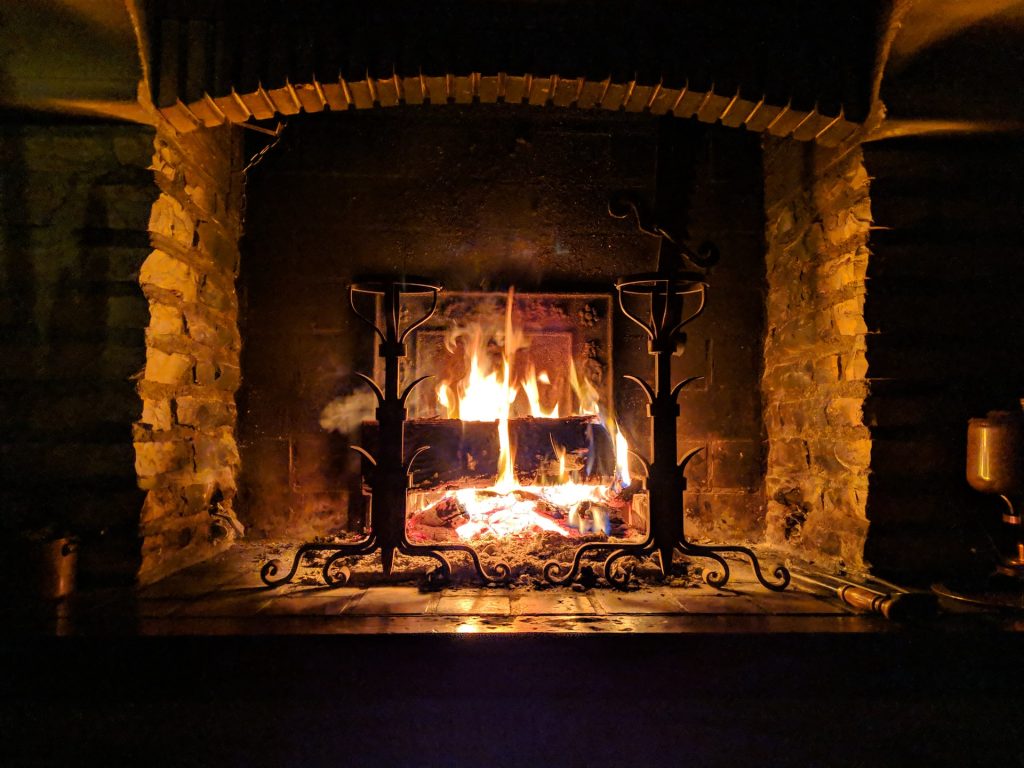
Expert Supply and Installation of Stoves in Scotland
- A family-run business with a passion for stoves, serving Scotland
- Comprehensive knowledge and expertise in multi-fuel and wood-burning stoves
- Personalized service to help you find the perfect stove for your room
- Professional, honest, and reliable installation services
- Attention to detail to ensure your stove fits your style and room dimensions
Quality Stoves, Supplied Directly to You
- Extensive range of high-quality stoves to suit various budgets and preferences
- Knowledgeable staff ready to guide you in selecting the right stove for your needs
- Direct supply options available for those who prefer to handle installation themselves
- Competitive pricing without compromising on quality
- Stoves sourced from reputable manufacturers known for their craftsmanship
Reliable Maintenance Services to Keep Your Stove in Top Condition
- Stove maintenance and servicing offered by skilled and friendly tradesmen
- Regular maintenance to ensure optimal performance and longevity of your stove
- Thorough inspection, cleaning, and repair of stoves
- Priority given to safety and compliance with industry standards
- Enhance the efficiency and reliability of your stove through professional maintenance
Experience Professionalism and Excellent Customer Service with Stove Scotland
- Friendly and professional team dedicated to providing exceptional customer service
- Respectful and responsible approach to both customers and their homes
- Tailored packages and installation options to suit your needs and budget
- Free, no-obligation quotes for a transparent and hassle-free experience
- Trustworthy advice and guidance to help you make informed decisions
With Stove Scotland, you can trust that you'll receive a top-notch service for all your multi-fuel and wood-burning stove needs. Whether you require expert installation, direct supply, or reliable maintenance services, Stove Scotland offers professionalism, honesty, and affordability. Their friendly team of tradesmen will ensure that your stove perfectly complements your room, providing warmth, comfort, and style for you and your family. Contact Stove Scotland today for a free quote and embark on your journey towards the perfect stove experience.
What are the Common Causes and Prevention of Stove Smoking
Wood burners are an excellent way to keep your home warm and cosy during winter. However, smoking is one of the most common problems associated with wood burners. Various factors can cause smoke to leak from a wood burner, and it is essential to understand these factors to prevent smoking. This article will discuss the common causes of stove smoking and provide some tips on preventing it.
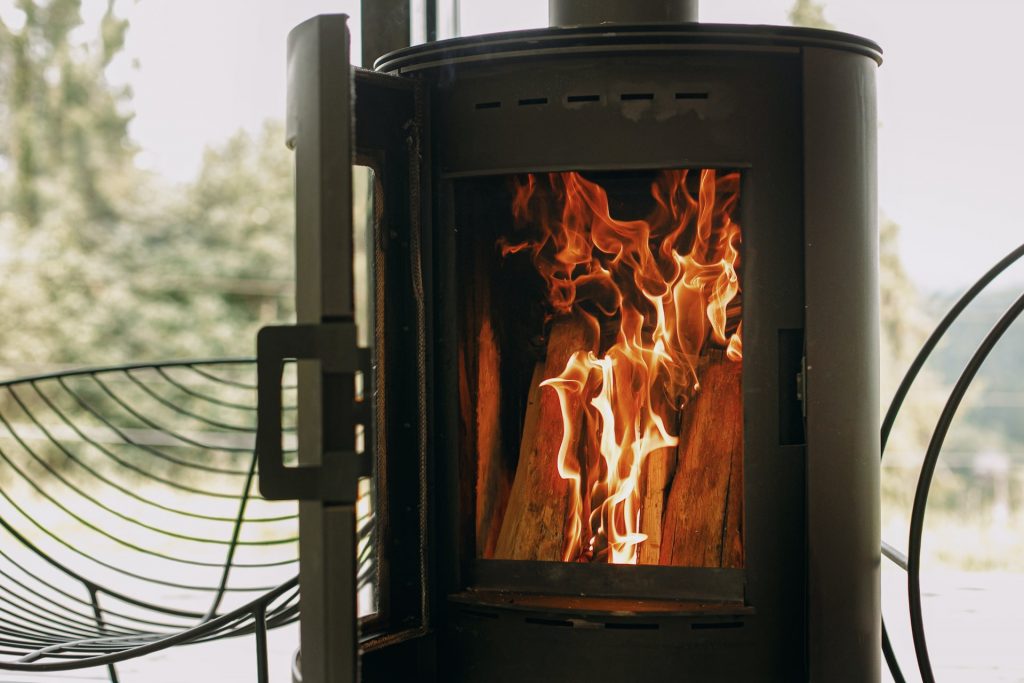
Common Causes of Stove Smoking
Insufficient Air Supply
One of the most common causes of stove smoking is an insufficient air supply. When not enough air flows into the stove, the fire will not burn hot enough to combust the wood completely. Incomplete combustion will result in the production of smoke, which will be released into the room. To prevent this, ensure that the air vents on your stove are open and that the furnace has good airflow.
Wet or Unseasoned Wood
Wet or unseasoned wood is another common cause of stove smoking. When wood is not correctly seasoned, it contains a high moisture level. This moisture will evaporate when the wood is burned, resulting in the production of smoke. Only use dry, seasoned wood in your wood burner to prevent this. Ensure the wood is stored in a dry place and has been properly seasoned for at least six months.
Blocked Chimney
A blocked chimney is another common cause of stove smoking. If your chimney is blocked, the smoke will not be able to escape, resulting in it being pushed back into the room. A blocked chimney can be caused by various factors, including a build-up of soot and debris, birds' nests or leaves and other debris. To prevent this, ensure that your chimney is cleaned regularly. A professional chimney sweep should clean your chimney at least once a year to prevent the build-up of soot and debris.
Poor Installation
If your stove has been poorly installed, this can also cause smoking. If the stove is not connected to the chimney correctly, the smoke will not be able to escape, resulting in it being pushed back into the room. To prevent this, ensure that your wood burner is installed by a professional installer who is qualified to do so. Ensure that the installer follows the manufacturer's instructions and that the stove is connected to the chimney correctly.
Using the Wrong Fuel
Using the wrong fuel is another common cause of stove smoking. Using the wrong fuel, such as coal, in your wood burner can cause smoking. Coal burns at a much higher temperature than wood, and if you use coal in a wood burner, the temperature will be too high, producing smoke. To prevent this, only use the appropriate fuel for your wood burner.
Conclusion
Smoking from a wood burner can be caused by a variety of factors. It is important to identify the cause of the problem and take appropriate measures to fix it. The earlier you address the issue, the better, as continuous smoking can lead to long-term damage to your wood burner and your home's air quality. By addressing these potential causes of wood burner smoking, you can enjoy a warm and cosy fire without the unwanted side effects of excessive smoke. Regular maintenance and proper usage will help ensure the longevity of your wood burner and the safety and comfort of your home.
Bring the timeless elegance of a wood stove in Scotland to your home with Stove Scotland. Choose from our range of high-quality stoves and enjoy professional installation and maintenance services. Contact our experts now to start your journey towards a cosier home!
Wood-Burning vs. Multi-Fuel Stoves: Examining the Pros and Cons of Popular Home Heating Options
Wood-burning and multi-fuel stoves are popular heating options for many homeowners. They offer a cost-effective and efficient way to heat your home, and they can create a warm and cosy atmosphere. However, like any heating option, they have their pros and cons. In this article, we'll explore the pros and cons of wood-burning and multi-fuel stoves, so you can decide if they're the right option for your home.

Pros of Wood-Burning and Multi-Fuel Stoves
1. Cost-Effective Heating
One of the biggest advantages of wood-burning and multi-fuel stoves is that they are a cost-effective way to heat your home. Wood is relatively inexpensive compared to other heating options, such as gas and oil. Additionally, a well-insulated stove can keep your home warm for longer, lowering your heating bills.
2. Eco-Friendly
Wood is a renewable resource, which makes wood-burning and multi-fuel stoves an eco-friendly heating option. Burning wood releases carbon dioxide, but it is considered carbon-neutral because the carbon dioxide released is offset by the carbon dioxide absorbed by the trees that were used to produce the wood.
3. Aesthetically Pleasing
Wood-burning and multi-fuel stoves can create a warm and cosy atmosphere in your home. They offer a traditional and rustic look that can add charm and character to any room. Additionally, the flame of a wood-burning stove can be mesmerizing and soothing, making it a great addition to your home's ambience.
4. Backup Heating
Wood-burning and multi-fuel stoves can also be used as backup heating options. If your main heating system fails, a wood-burning stove can keep your home warm and comfortable until the system is repaired.
Cons of Wood-Burning and Multi-Fuel Stoves
1. High Upfront Cost
One of the biggest disadvantages of wood-burning and multi-fuel stoves is their high upfront cost. Stoves can cost anywhere from a few hundred to several thousand dollars, depending on the size and features. Additionally, installation costs can add up quickly, especially if you need to install a chimney or make other modifications to your home.
2. Maintenance
Wood-burning and multi-fuel stoves require regular maintenance to run efficiently and safely. This includes cleaning the stove and chimney and inspecting and replacing parts as needed. Neglecting maintenance can lead to safety issues, such as chimney fires, and can reduce the efficiency of the stove.
3. Smoke and Air Pollution
Burning wood can release smoke and air pollutants into the environment. This can be a concern for people with respiratory issues and the environment as a whole. Additionally, some areas have restrictions on wood-burning stoves, particularly in urban areas where air pollution can be a problem.
4. Fire Risk
Wood-burning and multi-fuel stoves can be a fire risk if not used properly. For example, if the stove is overloaded with wood, it can create a fire hazard. Additionally, if the stove is not installed or maintained properly, it can increase the risk of a chimney fire.
The Bottomline
In conclusion, wood-burning and multi-fuel stoves offer many benefits, including cost-effective heating, eco-friendliness, and an aesthetically pleasing look. However, they also have drawbacks, including high upfront costs, maintenance requirements, smoke and air pollution, and fire risk. Considering a wood-burning or multi-fuel stove for your home, it's important to weigh the pros and cons carefully and ensure that you're prepared to own a stove. Additionally, it's important to follow safety guidelines and regulations to ensure your stove is used safely and responsibly.
Stove Scotland is your expert in stoves and fires. We will work with you to ensure your wood stove in Scotland fits your style and dimensions. Get in touch with us.
Reasons Why You Should Install a Fireplace in Your Home
Many of us get excited when the weather changes, and we wake up to crisp fall mornings with frost on the grass, thinking about the upcoming holidays and our favourite winter activities. However, with the arrival of winter comes an increase in heating costs, an aspect of the cold, dark season that many households dread.
Using a furnace as your home's sole source of heat can be costly, and installing a fireplace can help reduce your utility costs. It can do more for your winter experience than save you money on energy bills!
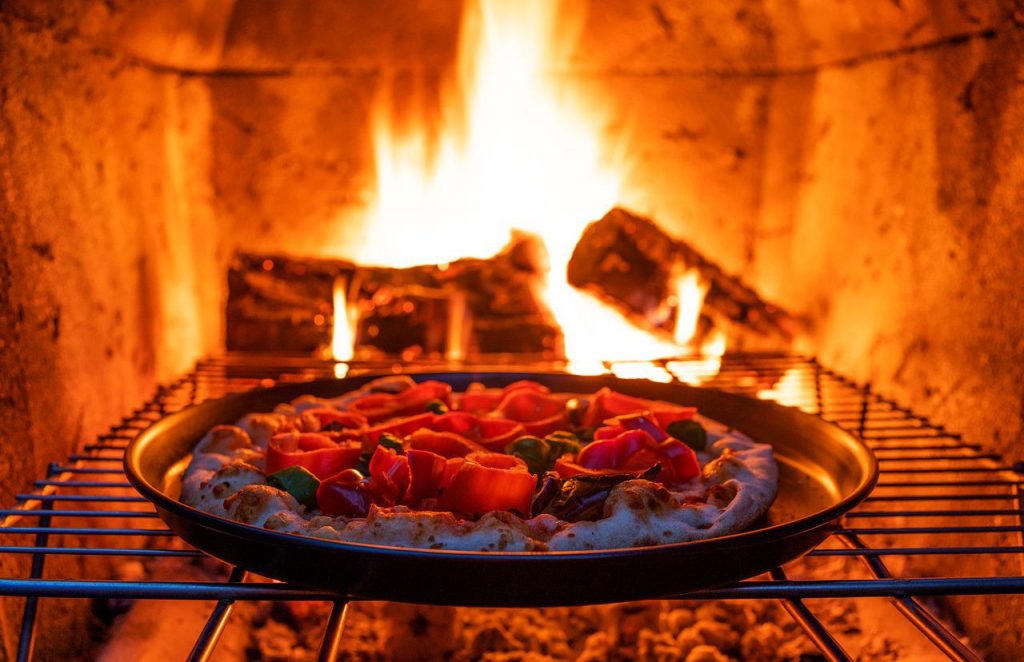
Here are the top reasons you should install a fireplace in your home right now:
Saves on Energy Bills
Fireplaces provide zone heating in homes, which reduces heating costs. To save money on energy costs during the winter, zone heating entails using a fireplace to warm the room(s) you use most frequently while turning down the heat in the remaining rooms.
Instead of increasing the temperature throughout your home during peak energy usage and heating empty rooms, you can reduce the temperature in these rooms and use your fireplace to stay warm.
Creates a Cozy Area
Nothing beats walking into a fire-lit room after a day of snow shovelling or cold-weather commuting. Watching flames flicker while the warmth of fire fills your face will help you relax and unwind.
A wood-burning fireplace's crackling logs can allow your mind to wander meditatively. Are you throwing a party for your friends? They'll naturally gravitate towards the light and warmth provided by a fireplace.
Are you spending the evening alone? Pull up a chair and a good book, make a nice mug of hot chocolate or tea, and you have a wonderful evening ahead of you.
Adds Value to Your Home
Who would not value a home with a fireplace? If you decide to sell your home, installing a fireplace will likely attract more buyers and enable you to ask for a higher price.
This is especially true if you live in a cold and snowy climate. In addition to attracting buyers' attention, the availability of a wood-burning or gas fireplace makes them willing to pay more for your home. A bidding war will ensue if you add a new, modern fireplace to your home, mainly if it includes a hearth or stonework.
Promotes an Eco-Friendly Alternative
Most home furnaces use fossil fuels, such as oil or natural gas. Using a wood-burning fireplace to supplement your furnace, especially if you try to use wood from fallen or sickened trees, reduces your use of fossil fuels.
Some new fireplace models can connect to your existing ductwork, allowing for increased heat efficiency and the ability to use wood as your primary fuel source. This also allows you to become less reliant on your utility company and take control of your heating source.
You'll be able to save money by shopping around for firewood or stocking up on cheaper green wood a year or two before you need it. Do you live on a heavily forested property? You could even have an infinite supply of free heat!
Conclusion
A fireplace is an excellent addition to any home. It provides heat and comfort and can be used as an aesthetic feature to add warmth and cosiness to your living space. Fireplaces come in many shapes and sizes, so you can choose one that fits your home perfectly. Installing a fireplace is not difficult either; with the help of professionals, you can have a beautiful fireplace in no time!
If you plan a fireplace installation in your home, look no further than Stove Scotland! We will collaborate with you to ensure that your stove matches the style and dimensions of your room without compromising aesthetics. Get in touch with us now!
5 Factors to Consider Multi-Fuel Stoves in Scotland
Multi-fuel stoves are a popular choice for heating homes in Scotland. They offer an efficient and cost-effective way to keep your home warm during winter. Multi-fuel stoves are designed to burn various fuels, including wood, coal, and smokeless fuels. They also produce fewer emissions than traditional open fires. This article will discuss five factors to consider when choosing a multi-fuel stove for your home in Scotland.
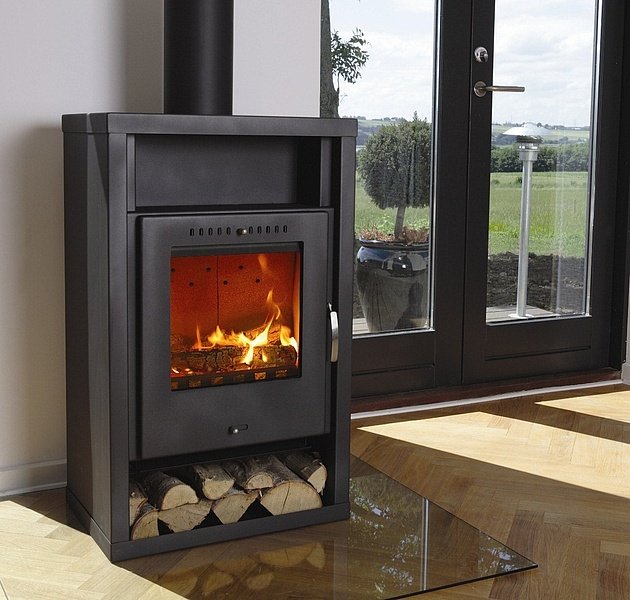
1. Heat Output
The heat output is one of the most important factors to consider when choosing a multi-fuel stove. The heat output of a stove is measured in kilowatts (kW). The size of your room and the level of insulation in your home will determine the heat output you need. A small room with good insulation will require a lower heat output than a larger room with poor insulation. It would help if you chose a stove with a heat output that matches the needs of your home.
2. Fuel Efficiency
Another crucial detail to consider when choosing a multi-fuel stove is fuel efficiency. A stove with high fuel efficiency will burn less fuel and produce more heat. This means you will save on fuel costs and reduce your carbon footprint.
Look for stoves with a high-efficiency rating, such as those that are DEFRA approved. These stoves have been tested and approved for use in smoke control areas, meaning that they produce low levels of emissions.
3. Design
Multi-fuel stoves come in a range of designs, from traditional to contemporary. The design of your stove should complement the style of your home. Traditional stoves are made from cast iron and have a classic look that suits older properties.
Contemporary stoves are made from steel and glass and have a modern look that suits newer properties. You should also consider the size and shape of your stove. A larger stove will produce more heat but may not fit in a smaller room. A rectangular stove may be more practical for a room with limited space than a circular stove.
4. Installation
The installation of a multi-fuel stove is an important factor to consider. You should hire a professional installer to fit your stove. They will ensure that the stove is installed safely and correctly. The installer will also advise you on the best location for your stove. It should be positioned away from combustible materials, such as curtains and furniture.
You should also consider the type of chimney you have. A chimney unsuitable for a stove can be lined or replaced. The installer will be able to advise you on the best solution for your home.
5. Cost
The cost of a multi-fuel stove is an important factor to consider. The price of a stove will depend on the size, design, and features of the stove. It would help if you also considered the installation cost and any additional items, such as a flue liner or chimney pot.
It is important to choose a stove that fits within your budget. However, it would help if you also considered the long-term savings a high-efficiency stove could offer. A stove that burns less will save you money on fuel costs in the long run.
Conclusion
Multi-fuel stoves are a popular choice for heating homes in Scotland. They offer an efficient and cost-effective way to keep your home warm during winter. When choosing a multi-fuel stove, you should consider factors such as heat output, fuel efficiency, design, installation, and cost. By choosing a stove that matches the needs of your home, you can enjoy the benefits of a warm and cosy home throughout the winter.
If you're looking for the best multi-fuel fireplace installers in Scotland, look no further than Stove Scotland! Our team of expert installers will help you choose the perfect stove for your home and ensure it is installed to the highest standard. Don't wait any longer to enjoy a warm and cosy home this winter — contact us today to schedule your installation!
3 Tips For Incorporating Log-Burning Stoves into Your Home
Using a log-burning stove can enhance the character and charm of your home, regardless of whether you use it as a heating device. Classic or modern stoves can add beauty and warmth to any room, such as the living room, kitchen, or bedroom.
When decorating with a log-burning stove, it's important to remember that you don't have to work around it. Instead, with creativity and materials such as paint, wood, stone, or metal, you can incorporate the stove into your interior design and achieve the desired look and feel.
Regardless of the size or style of the stove, it can be a gathering place for the family on cold nights or a beautiful accessory to enhance your home's decor. Here are three tips to help you use a log-burning stove in interior decorating.
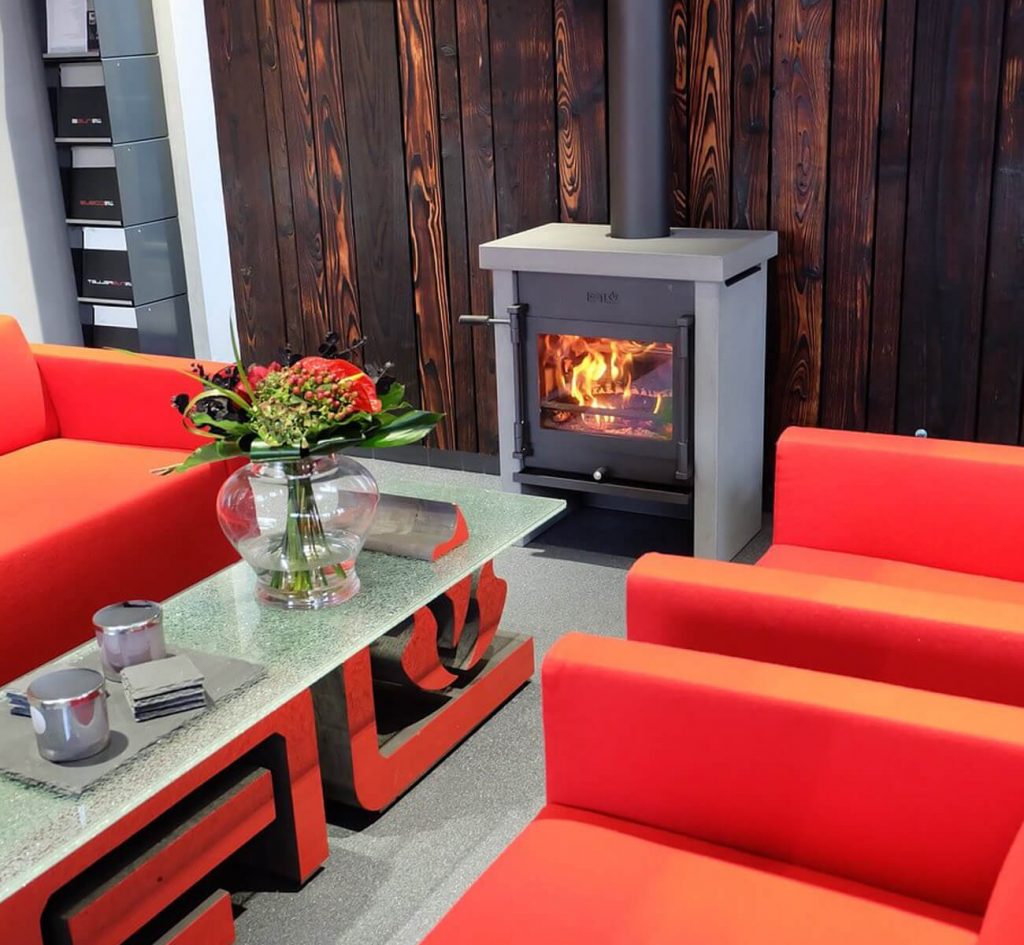
1. Choose the Right Size and Style
Choosing the right size and style is crucial when incorporating a log-burning stove into your home decor. Before making any decisions, take a step back and evaluate your available space. Consider the size and style of your existing decor to ensure your chosen stove will fit in seamlessly.
In addition to size, the style of your stove is also important. Classic stoves with intricate details and a vintage feel may work well in an older home with traditional decor. A sleek and streamlined stove may be the perfect fit for a modern space.
2. Choose the Right Location
If you intend to use your wood-burning stove for heat, it may not be practical to use it in a display area due to its exterior heating up too much. However, you can still make the stove the aesthetic focal point of the room by framing it with furniture and painting it to match your decor.
On the other hand, if you don't plan to use the stove for heat, you can use it as a mantel to display artwork or family photographs, place candles inside, or even turn it into seasonal art by adding pine cones, holiday ornaments, or fresh flowers.
3. Create a Cosy Atmosphere
Place a comfortable chair or sofa in front of the log-burning stove. Place a rug and throw pillows near the stove to make the area more inviting. You can also place natural wood around the stove, such as a rustic log table or basket. Add a few plants to add a touch of greenery to the space.
It's also a good idea to hang a few blankets or throws near the stove to take advantage of its heat. Place a few books or magazines nearby to make the area more inviting and cosy.
Conclusion:
Don't let your wood-burning stove go to waste! Whether you use it for heat or not, it can add character and charm to any room. Get creative with your decor by incorporating your stove into your interior design. Use paint, wood, stone, or metal to achieve your desired look and feel. Even if your stove is small, you can still make it a part of the overall design by painting it to match the room's colour palette or using it as a bookcase or display stand.
Call Stove Scotland today to experience the best stove fitting service in Scotland! Our team of certified professionals will provide you with top-notch installation and advice that will make sure your wood-burning stove is installed correctly and efficiently. Contact us today for a free quote.
7 Wood Fireplace Installation Mistakes You Must Never Make
Wood fireplaces are a great addition to any home, providing warmth, ambience, and a cosy atmosphere. However, installing a wood fireplace can be a challenging task, and there are several mistakes that you must avoid to ensure that your installation is safe and effective.
In this article, we will discuss the wood fireplace installation mistakes that you must never try.
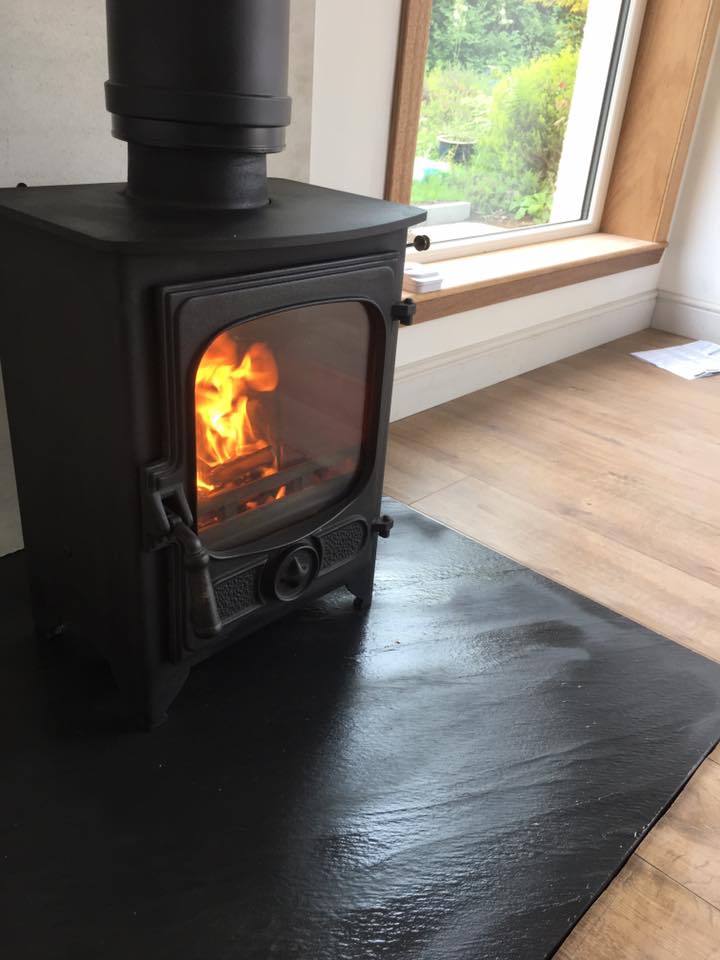
1. Choosing the Wrong Size Fireplace
Selecting the wrong size fireplace is a common mistake that homeowners make. A fireplace that is too small will not provide enough heat, while a fireplace that is too large can be dangerous and difficult to control. Remember, choosing the right size fireplace for your home is essential to ensure that it meets your heating needs and is safe to use.
2. Ignoring Building Codes and Regulations
One of the most typical mistakes homeowners make when installing a wood fireplace is paying attention to building codes and regulations. Building codes and regulations ensure the fireplace is installed safely and comply with local laws. Failure to comply and follow building codes and regulations can result in fines, legal issues, and even danger to your family.
3. Installing the Fireplace in the Wrong Location
Installing a wood fireplace in the right location can be dangerous and effective. It is essential to choose a site that is safe and easy to access. The fireplace should be installed away from flammable materials, and there should be enough space around it for proper ventilation.
4. Neglecting to Clean the Chimney
A dirty chimney is a fire hazard. Neglecting to clean the chimney can result in a dangerous buildup of creosote, which can ignite and cause a chimney fire. In this case, it is essential to clean the chimney regularly to ensure it is safe.
5. Not Hiring a Professional
Installing a wood fireplace is not a DIY project. It requires the expertise of a professional to ensure that the fireplace installation is done correctly and safely. A professional will have the necessary tools, knowledge, and experience to install the fireplace properly, reducing the risk of accidents and damage to your home.
6. Not Properly Insulating the Chimney
Proper insulation is critical when installing a wood fireplace. The chimney must be insulated correctly to prevent heat loss and reduce fire risk. A professional installer will ensure that the duct is protected perfectly and that the insulation is appropriate for the type of fireplace being installed.
7. Using the Wrong Type of Wood
Using the wrong type of wood can damage your fireplace and create a fire hazard. Softwoods like pine and cedar make more creosote than hardwoods like oak and maple, increasing the risk of chimney fires. It is essential to use the correct type of wood to ensure it is adequately seasoned before burning.
Conclusion
Installing a wood fireplace requires careful planning and attention to detail. Avoiding these seven installation mistakes ensures your fireplace is safe and effective and provides years of warmth and enjoyment. Always hire a professional installer, follow building codes and regulations, and use the correct type of wood to keep your family safe and warm.
Stove Scotland is your one-stop solution for all your stove and fire-related needs. With our team of market experts, we are equipped with comprehensive knowledge of stoves and fires, ensuring that our customers receive the best advice and services in the market. If you're seeking a reliable fireplace installation in Scotland, look no further than Stove Scotland. Contact us today, and let us help you find the perfect stove for your home.
Cleaning and Maintenance Tips for Your Wood-Burning Stove
Wood-burning stoves are an increasingly popular option for many homes today. However, just like any other appliance, these stoves require regular cleaning and maintenance to ensure their safe and efficient operation. This article will provide a comprehensive overview of cleaning and maintenance tips for wood-burning stoves, so you can keep your stove running smoothly.
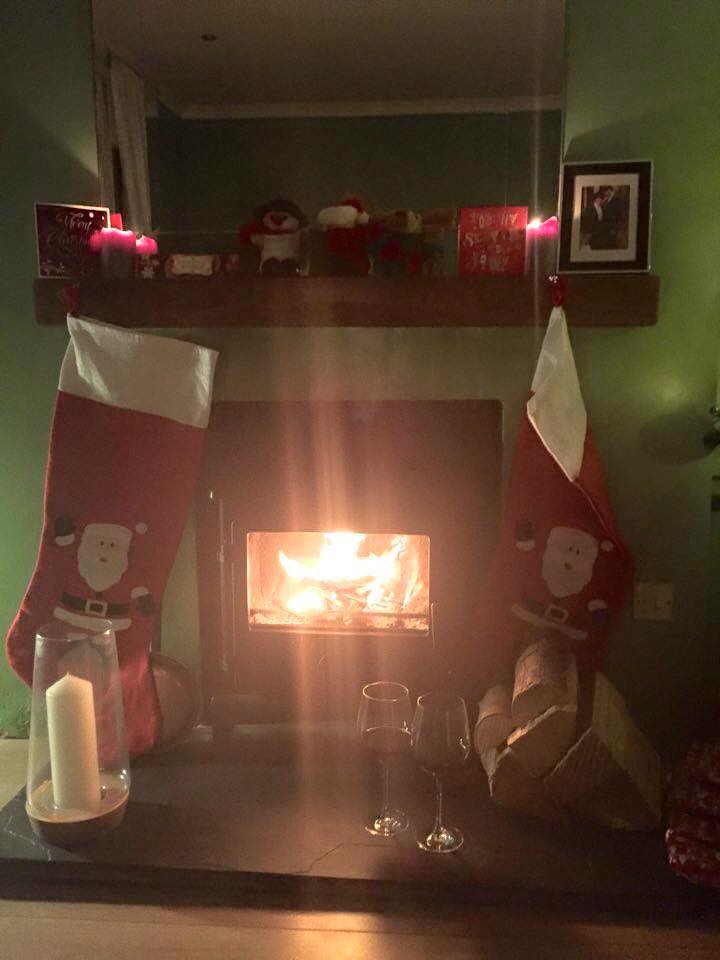
Always Wait for the Fire to Cool When Removing Ash
When using a wood-burning stove, it is important to wait for the fire to cool before removing ash. It is a safety precaution that should be taken to prevent the risk of burns or smoke inhalation. Ash can be harmful to your health if inhaled and can also be a fire hazard if it is still hot. Therefore, it is essential to wait until all the ashes are cooled down before attempting to remove them.
In addition to waiting for the fire to cool, it is also essential to wear protective gear when removing ash from the wood-burning stove. This includes safety goggles, a face mask, an apron, and gloves. This will help protect you from any harmful particles that could be in the air and keep you safe from any potential burns or injuries. It is also essential to use a dustpan and brush to ensure that all the ash is properly collected and disposed of.
Regularly Vacuum or Wipe Down the Exterior
Vacuuming or wiping down the exterior of your wood-burning stove is a crucial part of its maintenance. Regularly cleaning the exterior of your stove helps to prevent the build-up of soot and ash, which can cause damage to the stove. It also keeps the stove looking clean and attractive.
Vacuuming the exterior of your stove can be done using a handheld vacuum or with an attachment for a shop vacuum. It is important to vacuum in tight crevices and around the stove legs to ensure that all debris is removed.
Wiping down the exterior of the stove is also important, and this can be done using a damp cloth with mild detergent. This will help to remove any dirt or grime that has built up over time. After wiping down the exterior, it is important to dry it thoroughly to prevent water spots. Regularly vacuuming and wiping down the exterior of your wood-burning stove is a simple but essential step in its maintenance.
Don't Forget to Clean the Glass Door
When cleaning and maintaining your wood-burning stove, don't forget to give the glass door some extra attention. The glass door provides a window into the flames and should be cleaned regularly to ensure that it is always clear and free of debris. You can easily clean the glass door using a soft cloth and stove cleaner. Simply spray the cleaner onto the glass and use the cloth to wipe away any soot or dirt. If you scrub too hard, you may end up scratching the glass, so take care to use gentle strokes.
To finish, you can buff the glass door with a dry cloth to make it shine. While cleaning, also take a moment to inspect the glass door for any cracks or chips that may have developed over time. If any damage is found, it is best to replace the glass door as soon as possible to ensure that the stove is safe to use.
Final Thoughts
Wood-burning stoves need to be properly maintained in order to prevent hazards and ensure optimal performance. Regular cleaning is essential to keep the stove clean and free of debris, while regular inspections and maintenance should be done to ensure that the stove is functioning properly and safely. By following these tips, you can ensure that your wood-burning stove is safe and efficient.
Get quality wood-burning stoves from Stove Scotland. As local market leaders, we have access to every stove and flue system available. We also provide a wide range of supply and installation packages to meet your requirements and budget. Get a free quote now!
Top 11 Pros of Installing a Closed-Combustion Fireplace
The thought of having a cosy, warm fire burning in a fireplace on a chilly winter day is comforting. But only some homes have a fireplace, and only some have the space, budget, or time to install a traditional open-combustion fireplace. This is where closed-combustion fireplaces come in. Closed-combustion fireplaces offer several advantages over their open-combustion counterparts, making them an attractive option for many homeowners.

Here are the top 11 pros of closed-combustion fireplace installation in your home:
1. Safety
Closed-combustion fireplaces are designed to be much safer than open-combustion fireplaces. This is because they are designed to be as airtight as possible to ensure no smoke or sparks escape. This helps you and your family appreciate a fire without the risk of smoke inhalation or the threat of embers escaping and causing a fire.
2. Cleaner Air
Closed-combustion fireplaces are much cleaner than traditional open-flame fireplaces, producing fewer pollutants and emissions. This is distinguished news for those looking to reduce their carbon footprint and keep the air in their home free of smoke and other contaminants. Additionally, closed-combustion fireplaces use less fuel, which reduces your emissions of greenhouse gases. This can help to make your home more eco-friendly.
3. Easy Installation
A closed-combustion fireplace installation is much easier than installing an open-flame fireplace. This makes them an excellent choice for those looking to install a fireplace in their home without the hassle and expenditure of a standard installation.
4. Affordable
Closed-combustion fireplaces are typically much more affordable than traditional open-flame fireplaces, making them an excellent choice for those seeking to save money on their heating bills.
5. Aesthetics
Closed-combustion fireplaces are available in various styles and designs, making them an excellent choice for those looking to boost a touch of style and sophistication to their home.
6. Increased Energy Efficiency
Closed-combustion fireplaces are highly efficient and can help reduce your energy bills. They’re designed to capture the heat from burning fuel and transfer it into your home rather than letting it escape the flue.
7. Improved Air Quality
Traditional fireplaces can produce smoke and other particles, harming your health. Closed-combustion fireplaces use sealed combustion chambers, which keep these particles from entering your home.
8. Reduced Maintenance
Since they don’t require chimneys, closed-combustion fireplaces are easier to maintain. You won’t have to worry about cleaning out creosote or inspecting your chimney.
9. Versatility
Closed-combustion fireplaces are available in various styles, sizes, and fuel types, so you can find one that fits your needs.
10. Heat Retention
The airtight seals of a closed-combustion fireplace help to keep the heat in the home, which can help you save even more money on energy costs.
11. Durability
Closed-combustion fireplaces are designed to last for decades, providing you with years of reliable warmth and beauty. They are also designed to withstand extreme temperatures, so they can be used in any climate.
Conclusion
Whether you’re looking to save money on your heating bills, reduce your environmental impact, or simply bring a style to your home, a closed-combustion fireplace is a great choice. With its numerous benefits and advantages, it’s no wonder that so many people are installing closed-combustion fireplaces in their homes.
Stove Scotland is the best place for fireplace installation in Scotland and the UK. Our experienced installer team has been installing fireplaces for years and is well-versed in the latest technologies and trends. We offer a wide range of options for all types of fireplaces, from traditional to modern, and we will work with you to create the perfect fireplace for your home. Contact us today to learn how we can help you make the ideal fireplace for your home.
How to Choose the Right Fuel for Different Types of Stoves
Choosing the right fuel for your stove is an important decision, as it will affect the stove's performance. Different types of stoves require different types of fuel, and each type of fuel has its own advantages and disadvantages. It's important to match the fuel to your stove type in order to get the best results and to make sure your stove is running properly and safely.

Wood-Burning Stoves
Wood-burning stoves are a reliable and efficient way to heat your home and provide a cosy atmosphere. They are also an economical choice for heating your home, as wood is a renewable and sustainable resource. With that said, choosing the right type of wood for your stove is critical for both the safety and efficiency of your stove.
One of the most vital factors to consider when choosing the right type of wood for your wood-burning stove is moisture content. Wood with a moisture content of 20 per cent or less is ideal for wood-burning stoves, as it burns more efficiently and with less smoke. To determine the wood's moisture content, you can either use a moisture meter or buy pre-seasoned wood from a speciality store.
When it comes to the type of wood you use, it's important to remember that some woods are better for certain types of stoves than others. For example, oak is a great choice for a wood-burning stove, as it is denser and creates more heat than other types of wood. Other popular hardwood options include maple, cherry, and hickory.
Softwoods can also be used in wood-burning stoves, though they should be used with caution. Softwoods such as pine and spruce can burn quickly and create a lot of smoke. If you choose to use softwoods, be sure to use a smaller amount of wood and check the fire often to make sure it is burning properly.
Gas Stoves
Gas stoves are an increasingly popular choice for cooking in today's household kitchens. They offer a lot of convenience and flexibility, as they can easily be adjusted to various heat levels, allowing you to quickly and easily cook a variety of dishes. They also offer a lot of heat, allowing you to cook food faster and more efficiently.
When choosing a gas stove, it's important to consider the type of fuel that best suits your needs. Natural gas is the most common fuel used for gas stoves as it is readily available, efficient and cheaper than propane. However, propane is also available and can be used for gas stoves as well. Propane is more portable, making it great for camping and RV trips, but it can also be more expensive than natural gas, so it's important to weigh the pros and cons before making a decision.
Multi-Fuel Stoves
Multi-fuel stoves are the most popular type of stove, as they can burn a variety of fuels. When selecting a fuel for your multi-fuel stove, it is important to consider the stove's design. Different types of stoves are designed to be used with specific fuels. For example, some stoves are designed only to use white gas, while others can be used with kerosene, diesel, or wood. Additionally, some stoves are designed to use a combination of fuels. Understanding the design of your stove can help you select the right fuel.
Another factor to consider is the availability of fuel. White gas, kerosene, and diesel are widely available and can be found at most outdoor stores. Wood, however, is not as easily accessible and must be gathered in the wild or purchased from a speciality store. It is important to make sure the fuel you choose is readily available, as some stoves cannot burn alternate fuels without modifications.
Final Thoughts
Choosing the right fuel for your stove is an important decision that shouldn't be taken lightly. Different types of stoves require different types of fuel, and if you choose the wrong type of fuel, it could lead to safety issues and inefficient performance. Therefore, it's important to research the types of fuel available and the stove you plan to use to ensure that you are using the best fuel for your stove.
Get the right stove for your needs with the help of Stove Scotland. We are stove fitters in Scotland that will work with you to ensure that your stove will perfectly fit the style and dimensions of your room. As local market leaders, we have access to every stove and flue system available. Get a free quote now!









